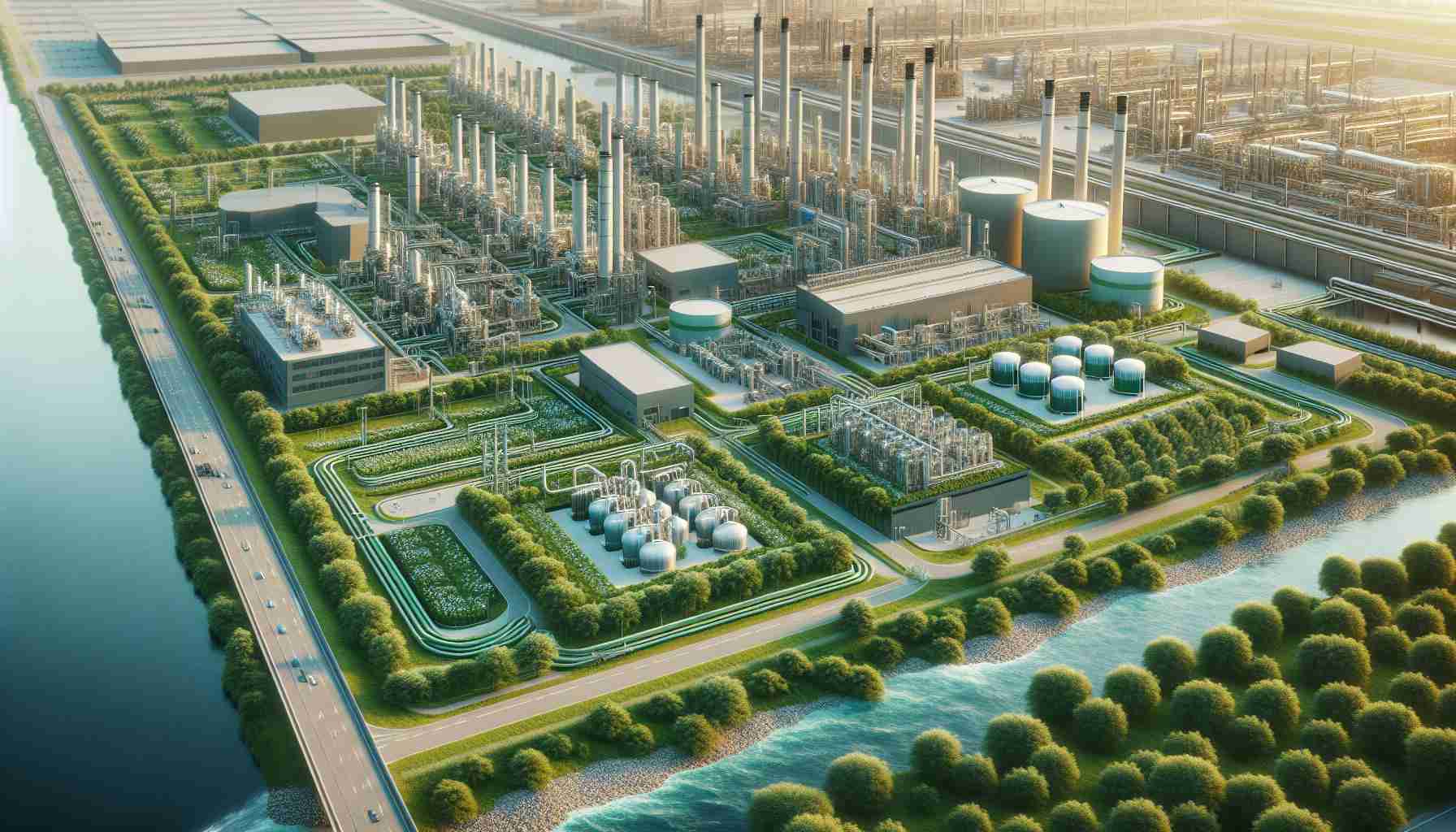The energy landscape is experiencing a significant shift as the SoutH2 Corridor, a groundbreaking pipeline spanning 3,300 kilometers, is set to transport green hydrogen from Algeria to the European Union. By 2030, this ambitious project aims to produce over 4 million tonnes of hydrogen, revolutionizing energy patterns across continents and reducing Europe’s dependence on fossil fuels.
What sets the SoutH2 Corridor apart is its unique approach of repurposing existing infrastructure. Over 70% of the pipeline will make use of old natural gas pipelines, resulting in substantial cost savings. This innovative strategy is further supported by extensive studies on technical, economic, and environmental viability, funded by hundreds of millions of euros.
Harnessing the abundant solar and wind resources in Algeria, the SoutH2 Corridor will generate 20 GW of energy from solar and wind farms. This immense energy capacity will fuel the transportation of 4 million tonnes of hydrogen annually to meet the industrial demand in key centers across Italy, Austria, and Germany.
Additionally, the corridor addresses the challenge of transporting hydrogen from within each participating country back to Europe. It encourages the integration of renewable energy projects at a national level, fostering cooperation among countries. This collaborative effort is crucial in tackling carbon-intensive industries like steel and chemical production.
The SoutH2 Corridor not only provides a cost-efficient and sustainable solution but also highlights the importance of international cooperation. The project represents a major stride towards a greener future by demonstrating how countries can work together harmoniously to combat climate change and enhance energy security.
To make this vision a reality, substantial investment is required, with the EU’s REPowerEU plan providing €18.8 billion and an additional €10 billion sought from the private sector. Algeria, as a key energy supplier, is poised to play a pivotal role in supporting and leveraging green hydrogen adoption in Europe. France may also join this transformative endeavor, aligning its hydrogen ambitions with the corridor’s objectives.
In conclusion, the SoutH2 Corridor showcases the innovative repurposing of existing infrastructure for the production and transportation of green hydrogen. By embracing renewable energy sources, fostering international collaboration, and reducing reliance on fossil fuels, this project signifies a significant step forward in shaping a more sustainable and interconnected global energy landscape.
SoutH2 Corridor: FAQ
What is the SoutH2 Corridor?
The SoutH2 Corridor is a groundbreaking pipeline spanning 3,300 kilometers, set to transport green hydrogen from Algeria to the European Union. It aims to produce over 4 million tonnes of hydrogen by 2030, revolutionizing energy patterns and reducing Europe’s dependence on fossil fuels.
How does the SoutH2 Corridor repurpose existing infrastructure?
Over 70% of the pipeline will make use of old natural gas pipelines, resulting in substantial cost savings. This innovative strategy is supported by extensive studies on technical, economic, and environmental viability.
What is the energy capacity of the SoutH2 Corridor?
The corridor will generate 20 GW of energy from solar and wind farms in Algeria. This immense energy capacity will fuel the transportation of 4 million tonnes of hydrogen annually.
Which countries will benefit from the SoutH2 Corridor?
The project aims to meet the industrial demand in key centers across Italy, Austria, and Germany. It also encourages the integration of renewable energy projects at a national level, fostering cooperation among countries.
What industries will the SoutH2 Corridor benefit?
The corridor is crucial in tackling carbon-intensive industries like steel and chemical production, by providing a sustainable solution for these sectors.
How is the project funded?
The EU’s REPowerEU plan provides €18.8 billion for the project, and an additional €10 billion is sought from the private sector.
What role does Algeria play in the SoutH2 Corridor?
Algeria, as a key energy supplier, is poised to play a pivotal role in supporting and leveraging green hydrogen adoption in Europe.
Is France involved in the SoutH2 Corridor?
France may also join the project, aligning its hydrogen ambitions with the objectives of the corridor.
Related Links:
– SoutH2 Corridor Official Website
– REPowerEU Plan
